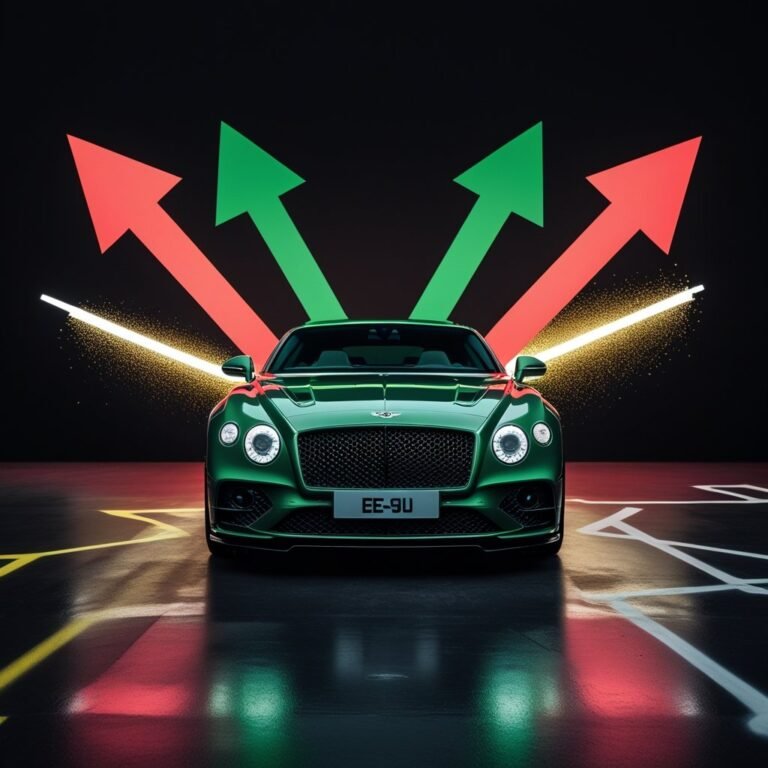Limited edition cars are the crown jewels of the classic car import trend 2025. They’re not just vehicles—they’re rolling pieces of art, built for those who crave something extraordinary.
Collectors chase these machines for their unique features, tiny production runs, and the bragging rights that come with owning what most people can only dream about.
From Porsche to Pagani, the rarest cars in the world and how much they cost 2025 is a hot topic. Each brand brings its own flavor, and honestly, that’s part of the thrill.
These limited editions pack wild performance, wild design, and sometimes a backstory that just makes you want to stare at them for hours. Why do collectors go to such lengths? It’s about more than horsepower—it’s about being part of a story that’s still unfolding.
1) Porsche 911 Carrera S Endurance Racing Edition

The 2017 Porsche 911 Carrera S Endurance Racing Edition is a collector’s dream, no question. Porsche built it as a love letter to their Le Mans legacy—specifically those wild 919 Hybrid victories from 2015 to 2017.
This isn’t your average 911. It’s part of the 991.2 generation, and only 235 exist worldwide. That’s not a typo.
The livery screams “race car,” and if you’re in the U.S., you’re even luckier—just 73 made it stateside. That’s unicorn territory for North American collectors.
Porsche dropped this edition at Le Mans in 2016, right after their 17th overall win. That timing? Genius. It’s like buying a piece of history the day it happens.
Performance upgrades? Absolutely. The original UK price tag was £107,216—about £21,000 more than the standard Carrera S. Worth it? For the right collector, definitely.
Most of these cars barely see daylight. Some have less than 1,000 miles and factory warranties still intact.
Porsche fans love the blend of classic 911 bones and exclusive race-inspired tweaks. If you’re into provenance and condition, this is the one to watch on the Hagerty Bull Market List 2025 collector cars to watch.
With such a tiny production run, it’s no wonder auction prices for rare vehicles vs estimates keep surprising even seasoned investors.
2) Ferrari LaFerrari Aperta
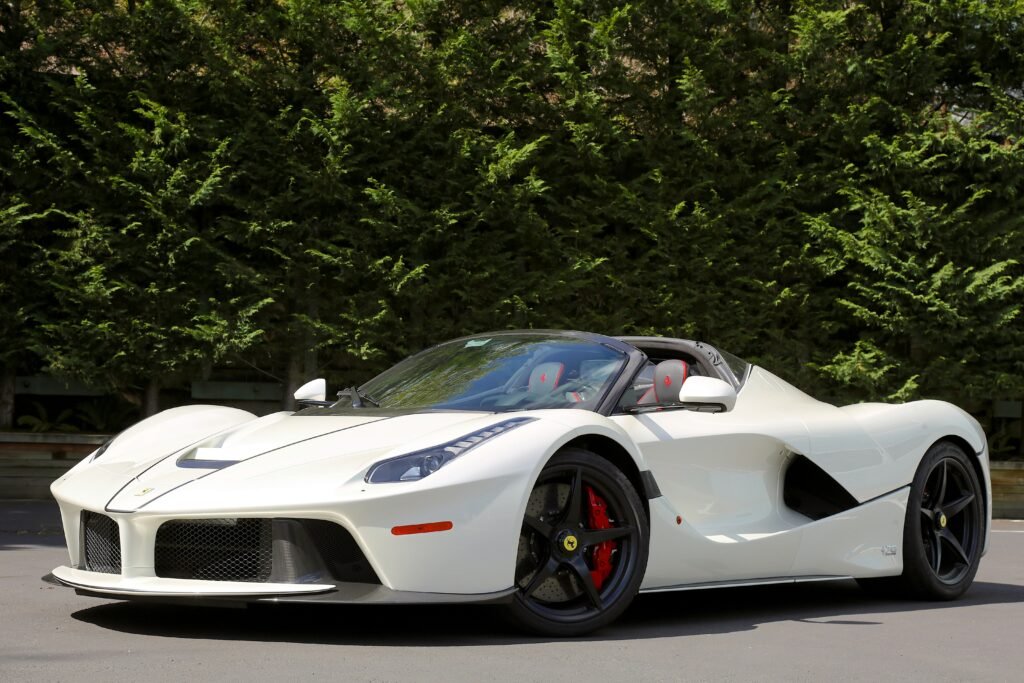
The Ferrari LaFerrari Aperta is the stuff of legends. Ferrari built it to mark their 70th birthday in 2016, and honestly, what a way to throw a party.
They made just 210 of these between 2016 and 2018. If you blinked, you missed your chance.
The Aperta’s hybrid powertrain blends a 6.3-liter V12 with an electric motor. It’s the kind of setup that makes you rethink what “fast” means, and it’s a taste of Ferrari’s future.
Ferrari’s engineers obsessed over keeping the convertible version just as aerodynamic as the coupe. They pulled it off, too.
When they pulled the covers off at the 2016 Paris Motor Show, jaws dropped. It’s not just a convertible—it’s an event on wheels.
Ferrari handpicked the buyers. If you weren’t already a VIP collector, you had no shot.
What’s wild is how the Aperta blends cutting-edge hybrid tech with old-school Ferrari soul. Carbon fiber everywhere.
Collectors know this car marks a turning point for Ferrari—electrification, but with the heart of a V12. That’s investment-worthy classic cars to buy 2025, no question.
Driving one? It’s basically pure adrenaline, with instant torque and that roaring V12 soundtrack.
Prices keep climbing. The Aperta’s limited run, anniversary status, and wild performance make it a grail for serious Ferrari fans.
3) Lamborghini Veneno

The Lamborghini Veneno is as rare as a total solar eclipse—blink and you’ll miss it. Lamborghini went all-out for their 50th anniversary, and the result is part spaceship, part fever dream.
They made only 14 Venenos in total. Four coupes, nine roadsters. That’s it.
It hit the scene at the 2013 Geneva Motor Show and instantly divided opinions. Too wild? Maybe. Too expensive? Try $4.5 million for the roadster.
The Veneno packs a naturally aspirated V12 with 750 horsepower. Zero to sixty in 2.9 seconds, and it’ll keep going to 221 mph.
Carbon fiber dominates the build, keeping it light and brutally strong. This isn’t a car—it’s a statement.
The aerodynamics are straight out of a comic book. Massive rear wing, wild intakes, and enough downforce to glue it to the track.
For serious collectors, the Veneno is a blue-chip investment. It’s the definition of limited edition new cars as investment 2025.
The design is so angular and dramatic, you can’t mistake it for anything else. It’s not subtle, and that’s the point.
Inside, you get racing seats, carbon fiber everywhere, and a cockpit that feels like a fighter jet.
Values just keep rising. The Veneno is a status symbol, and owning one is like having a Rembrandt in your garage.
4) Bugatti Chiron Pur Sport
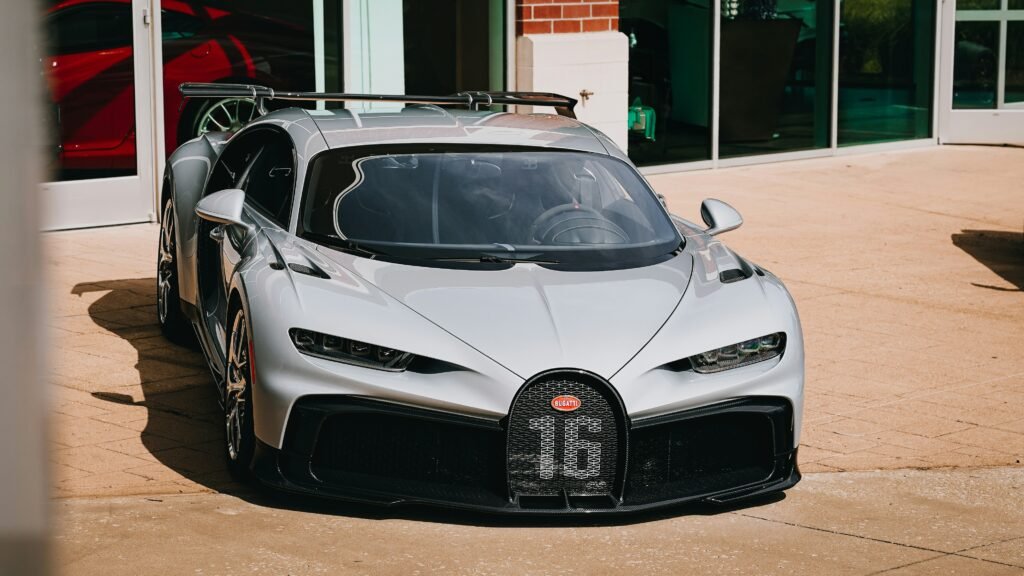
The Bugatti Chiron Pur Sport is Bugatti unleashed. This is their answer to collectors who want more track and less boulevard.
Only 60 exist. The original price? EUR 3,570,000. Now, you’ll pay even more.
Bugatti gave the Pur Sport a wild aero kit—huge rear wing, front splitter, and side intakes. It’s built to stick to the road, not just look pretty.
Under the hood, you get the 8.0-liter quad-turbo W16 with 1,479 horsepower. But the gearing is shorter for quicker acceleration and sharper handling, not just top speed bragging rights.
They ditched a lot of the luxury fluff and swapped in lightweight materials. Every ounce matters when you’re chasing lap times.
Suspension? Stiffer springs and dampers. It’s track-ready, but you can still drive it to dinner—if you dare.
Inside, it’s all business: racing seats, carbon fiber, and controls that make you feel like a pilot.
Collectors love the Pur Sport for its rarity and focus. It’s a rare beast that proves Bugatti can do more than just straight-line speed.
At almost two meters wide, it’s impossible to miss. The look alone is enough to make other Chiron owners jealous.
If you’re lucky enough to spot a Chiron Pur Sport Grand Prix—only three exist—you’re witnessing history.
The Pur Sport is a flex. It’s Bugatti saying, “We can do rare, focused, and fast.” For the 2025 collector demand, it’s a must-watch.
5) McLaren P1 GTR
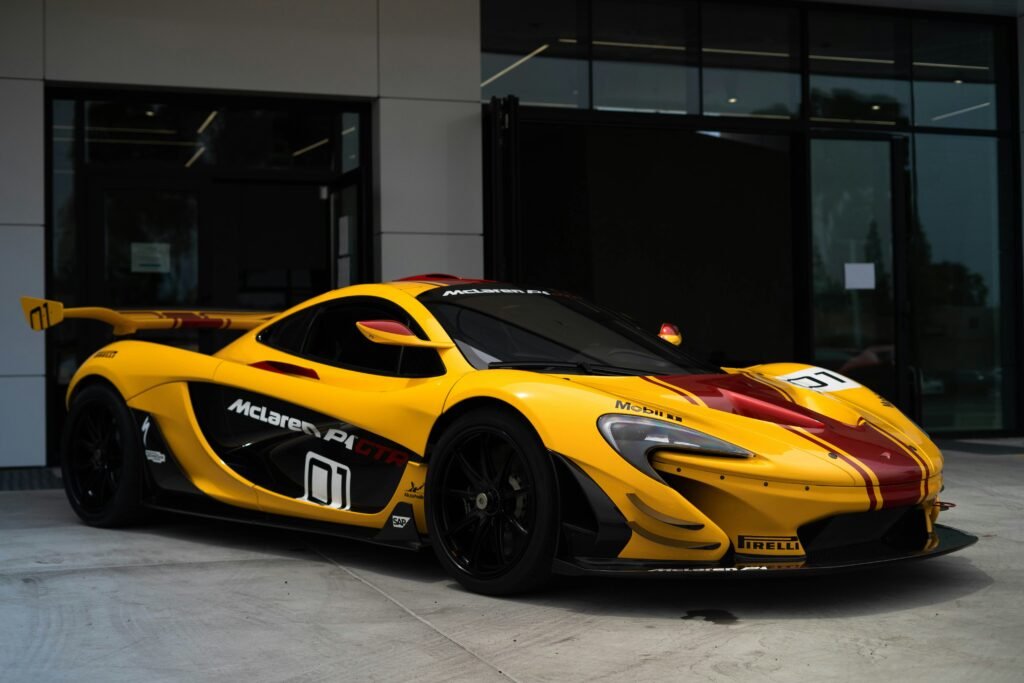
The McLaren P1 GTR really sits at the top of the classic car import trend 2025. It’s not just a car—it’s a racing fever dream made real. Only 58 P1 GTRs ever left the factory, so if you spot one, consider yourself lucky.
Collectors worldwide chase these because, honestly, who wouldn’t want a piece of pure McLaren racing DNA? The P1 GTR takes the already wild P1 road car and dials everything up to eleven—think F1-level tech, but with even fewer rules.
Its hybrid powertrain delivers jaw-dropping performance, and the carbon fiber body feels like it’s carved from the future. The aerodynamics? Absolutely bonkers—every scoop and wing screams speed.
The GTR badge ties back to McLaren’s legendary F1 GTR that conquered Le Mans in ’95. For racing fans, that’s a legacy you can actually park in your garage.
Sure, McLaren built it for the track, not the street. But, if you’ve got the right connections (and deep pockets), some specialists can make it street-legal. That exclusivity just adds to the collector demand.
Right now, expect to shell out between$2 million and $4 million for a well-kept example. These values keep climbing, and honestly, I don’t see them slowing anytime soon—especially with investment-worthy classic cars to buy 2025 on everyone’s radar.
McLaren’s engineers went all-in, stripping away every ounce of unnecessary weight. The result? A machine that’s pure adrenaline on wheels—no compromises, no apologies.
Owning a P1 GTR isn’t just about the car. McLaren throws in a track support program, with pro instructors and technical wizards at your beck and call during international racing events. That’s next-level VIP treatment.
The look? Aggressive doesn’t begin to cover it. Giant wings, gaping intakes, and those wild racing liveries make the P1 GTR impossible to ignore. It’s basically a rolling piece of art—and a rocket ship at the same time.
Finding one for sale? Good luck. When a P1 GTR pops up at auction, it’s a feeding frenzy among collectors, and the auction prices for rare vehicles vs estimates often smash predictions. If you want in, patience (and a hefty bank account) is your best friend.
6) Aston Martin V12 Vantage S Ultimate Edition

The Aston Martin V12 Vantage S Ultimate Edition is a love letter to old-school performance. In a world obsessed with turbos and hybrids, this naturally aspirated beast is a breath of fresh air for the classic car market trends 2025.
They crammed the mighty 5.9-liter V12 from the DBS into the lighter Vantage shell. The result? One of the best sports cars set to rise in value in 2025—raw, unapologetic, and loud.
With 595 horsepower on tap and a titanium exhaust that sings at full throttle, this car isn’t shy about making an entrance. The sound alone could convince anyone to become a collector.
The original V12 Vantage bowed out in 2018. That scarcity, plus special editions like the Red Bull Racing Edition, keep values strong and collector car auction listing counts slowing 2025 as people hold onto their treasures.
If you’re in the market, expect topay around £85,000 for an average example. That’s not pocket change, but considering its place among the most expensive 10% of collector cars, it’s a solid investment.
The rarest cars in the world and how much they cost 2025? The GT12 edition is right up there—100 units, race-inspired upgrades, and a cult following to match.
Red Bull Racing collaborations brought unique paint, power upgrades, and the legendary dog-leg 7-speed manual. If you ask me, that’s the kind of weird, wonderful detail collectors crave.
Manual transmissions are nearly extinct these days, so the V12 Vantage S stands out as a true driver’s car. Three pedals, endless smiles—it’s a dying art, and collectors know it.
Aston Martin’s build quality shines through with hand-finished carbon fiber, aluminum panels, and an attention to detail you just don’t see in mass-market cars.
With limited numbers and the end of naturally aspirated V12s, these cars tick every box for investment-worthy classic cars to buy 2025. British craftsmanship, rarity, and a soundtrack that’ll haunt your dreams—what more could you want?
7) BMW M3 E36 Lightweight

The BMW M3 E36 Lightweight is pure icon status. Built from 1986 to 1991, it’s the poster child for the classic car import trend of 2025 and a must-have for anyone serious about collector demand.
BMW crafted the E36 M3 for DTM racing, and it shows. Lightweight construction, box-flared fenders, and a stance that means business—this car oozes motorsport DNA.
Under the hood, the S50 engine—a high-revving 3.0-liter four—packs a punch that belies its size. It’s not the biggest engine, but it’s got heart and soul in spades.
The E36 M3’s racing pedigree is legendary. Every curve, every detail, screams performance. It’s no wonder collectors can’t get enough.
Wide fenders, bigger wheels, and that unmistakable silhouette—this isn’t your average 3 Series. It’s a statement on wheels.
BMW went all-in on weight reduction, using lightweight materials wherever possible. The result? A car that feels alive in your hands—nimble, responsive, and just plain fun.
Rear-wheel drive and perfect weight distribution make the E36 M3 a handling masterpiece. If you’ve ever driven one, you know it’s magic—like dancing with a partner who anticipates your every move.
Special editions like the Cecotto added even more allure, with unique features and even tighter production numbers. It’s these quirks and stories that make collecting so addictive.
The E30 M3 didn’t just launch a legend—it redefined what a sports sedan could be. Every M car since owes it a debt.
Original, unmodified examples now fetch serious money at auction. Hagerty Bull Market List 2025: collector cars to watch? You bet the E36 on it.
Racing heritage, lightweight engineering, and a dash of 1980s attitude make the E36 M3 one of the most collected limited edition cars ever. If you’re thinking of investment-worthy classic cars to buy in 2025, this one’s a no-brainer.
8) Mercedes-Benz SLS AMG Black Series
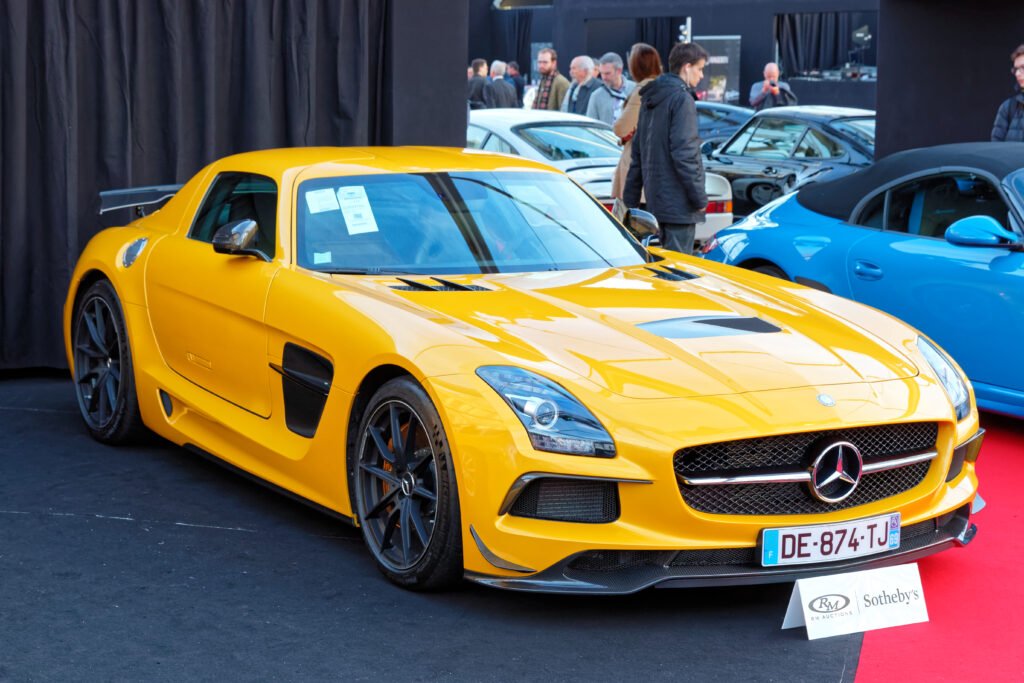
The Mercedes-Benz SLS AMG Black Series is pure drama on four wheels. If you’re hunting for classic car import trend 2025, this is a showstopper that commands attention at any gathering of car enthusiasts.
Launched in 2014, the Black Series took the already wild SLS and turned everything up to eleven. Those gullwing doors? A nod to the legendary 300 SL—history meets horsepower.
Pop the hood and you’ll find a naturally aspirated 6.2-liter V8 pumping out 622 horses and 468 lb-ft of torque. No turbos, just raw, unfiltered power—the kind that’s getting harder to find these days.
At launch, it was the world’s most powerful naturally aspirated V8 production car. That’s not just a stat—it’s bragging rights for life.
Inspired by the SLS AMG GT3 racecar, the Black Series is all about track-focused performance. Engineers stripped weight, sharpened handling, and gave it a look that means business.
Inside, it’s carbon fiber and Alcantara everywhere—luxury meets lightweight. Those AMG bucket seats hug you tight, ready for every hairpin and straightaway.
Mercedes only built a handful, so rarity is baked in. That’s why collector demand is so fierce, and why auction prices for rare vehicles vs estimates keep surprising even seasoned pros.
The SLS AMG Black Series is the pinnacle of Mercedes performance. It’s got the looks, the power, and most importantly, that sense of occasion every time you fire it up.
Collectors love it for the naturally aspirated engine—an endangered species these days. And those gullwing doors? They never get old. It’s a car that makes you feel like a superstar, even if you’re just heading to the store.
Values are still climbing as more people realise what a unicorn this is. If you’re building a collection with investment-worthy classic cars to buy in 2025, this one’s a must-have.
9) Pagani Huayra BC
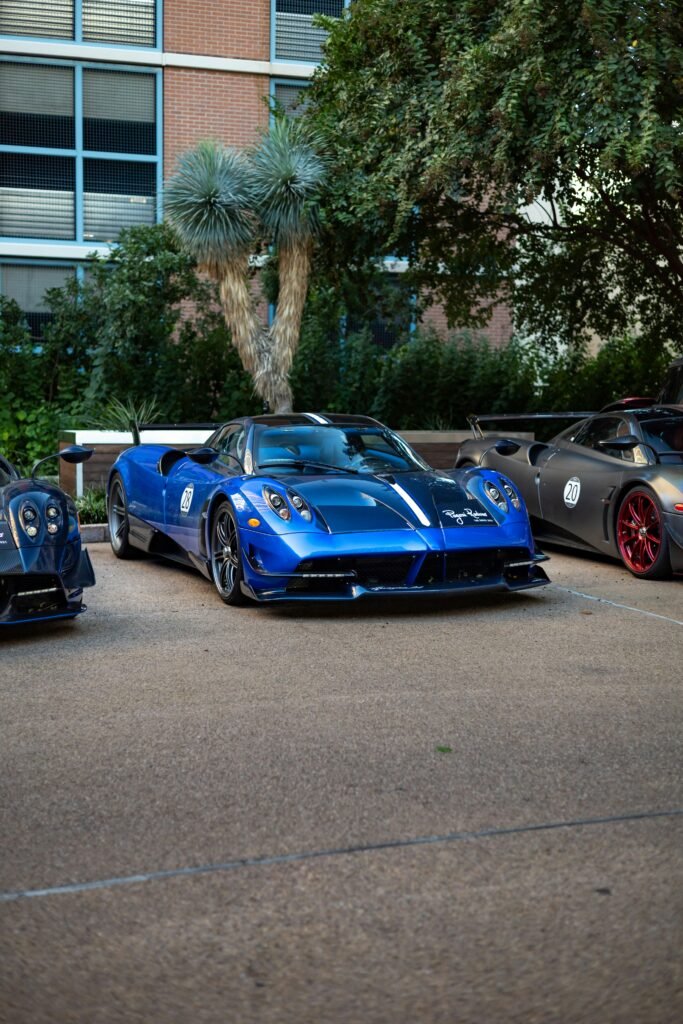
The Pagani Huayra BC is what happens when passion meets obsession. If you’re following the guide to understanding classic car market trends 2025, this car is the definition of rare and desirable.
Named for Benny Caiola, a close friend of Horacio Pagani, the BC takes the already insane Huayra and cranks it up. Carbon fiber everywhere, wild aero, and a presence that’s almost intimidating.
Underneath, there’s a 6.0-liter twin-turbo V12 from Mercedes-AMG, making 789 horsepower. Acceleration? It’s like being shot from a cannon—hold on tight.
Huge wings, splitters, and side intakes aren’t just for show—they keep the BC glued to the tarmac. Every line serves a purpose, and it’s all about performance.
Pagani obsessed over weight reduction, stripping out anything that didn’t make the car faster. The result? Handling that borders on telepathic, and a power-to-weight ratio that’s just ridiculous.
Production numbers? Tiny. Pagani builds only a handful each year, so seeing one in the wild is like spotting a unicorn. That exclusivity drives collector demand through the roof.
Inside, it’s a blend of luxury and motorsport—hand-stitched leather, carbon fiber, and purposeful design. It’s an art gallery that happens to go 230 mph.
Market values are sky-high. Expect to pay around $3 million plus, maybe more if the condition and provenance impact on collector car price is top-notch. Vinovest and other investment platforms keep a close eye on these sales.
The Huayra BC isn’t just about speed; it’s about the experience. Advanced suspension, monster brakes, and steering so precise it feels alive—it’s a car that begs to be driven, but most will live pampered lives in private collections.
For me, the Huayra BC is Pagani’s masterpiece. It’s a rolling sculpture, a technical marvel, and one of the rarest cars in the world and how much they cost in 2025? Worth every penny, if you ask me.
10) Ford GT Heritage Edition

The Ford GT Heritage Edition sits high on the list of must-have collector cars, especially for anyone chasing the classic car import trend 2025. Ford’s rolled out several Heritage Edition variants over different generations—each one with its own vibe and story.
The first-generation 2006 Ford GT Heritage Edition rocked those iconic blue and orange Gulf Oil racing colors. That paint job? It’s a direct nod to the Le Mans-winning legends from 1968-69. Pure nostalgia, honestly.
Ford cranked out only 343 Heritage Edition models for the first-gen GT. With numbers that low, it’s no wonder these cars have become some of the rarest cars in the world and how much they cost 2025 is honestly jaw-dropping.
The second-generation GT brought fresh Heritage Edition flavors. The 2018 Ford GT ’67 Heritage Edition saluted the 1967 Le Mans-winning GT40 Mark IV. It wore Race Red paint, white stripes, and the number 1—talk about drama on four wheels.
Modern Heritage Editions pack Ford’s 3.5-liter twin-turbocharged V6 EcoBoost, good for 647 horsepower. That’s a lot of muscle for a tribute car.
The 2021-2022 GT Heritage Edition was even more exclusive—just 50 built. That puts it on a whole different level of scarcity, even for seasoned collectors following the investment-worthy classic cars to buy 2025.
Ford also put out the ’66 Heritage Edition, another hat-tip to their racing glory days. These models just keep the Le Mans legacy alive, year after year.
Low-mileage examples? Yeah, they’re gold. A 2006 Ford GT Heritage Edition recently cleared seven figures at auction, which isn’t just impressive—it’s a thunderclap in the collector world.
Unlike most supercars, Heritage Editions didn’t nosedive in value. Instead, they became collector favorites almost overnight, proving that some cars are just born to win the long game.
Celebrity ownership only adds fuel to the fire. Wayne Gretzky’s 2006 Heritage Edition with barely over 1,200 miles recently hit the market, showing how these cars attract not just car geeks, but icons.
Each Heritage Edition is a rolling tribute—modern performance, old-school soul. If you’re building a serious collection, these are non-negotiable. The perfect storm of limited production, racing roots, and instant collectibility makes them the stuff of legend.
Key Factors Driving Collector Demand
So, why do collectors chase certain limited edition cars like they’re the Holy Grail? Let’s break it down. Rarity always gets hearts racing, but historical importance and pristine condition? That’s what turns a cool car into an investment-worthy classic car to buy in 2025.
Historical Significance
Cars that mark big milestones in automotive history always grab attention. Final-year models often become unicorns, while first-year icons are magnets for serious buyers.
Racing heritage? That’s pure gold. If a car’s got motorsport DNA or a trophy cabinet, collectors will practically trip over themselves. Street-legal versions of race cars usually end up as blue-chip investments.
Anniversaries give manufacturers a reason to drop special editions. These models celebrate company milestones or legendary designers. And if a celebrity or blockbuster movie gets involved? The hype goes through the roof.
Key historical factors collectors obsess over:
- First or last production years
- Racing wins or motorsport pedigree
- Designer influence
- Cultural impact—think movies, TV, viral fame
Production Numbers and Rarity
Low production numbers are like rocket fuel for collector car values. If you’re talking under 500 units, you’re looking at serious appreciation—just ask anyone following the classic car import trend 2025.
Some brands, like Ferrari, keep things exclusive by only selling to loyalists. McLaren? Sometimes only 375 units of a special model. That’s how legends are born.
Production tiers that drive value:
- Ultra-rare: Fewer than 100 units
- Very rare: 100-500 units
- Limited: 500-2,000 units
- Special: 2,000+ units
Sometimes, market crashes or factory hiccups cut production short. Those accidental rarities? They can end up as the rarest cars in the world—and their auction prices for rare vehicles vs estimates can be wild.
Preservation and Condition
Original beats restored, almost every time. Collectors pay top dollar for matching numbers and all the right paperwork. Documentation matters—a lot.
Mileage tells a story. Under 5,000 miles? That’s the sweet spot. Garage-kept, with service records? Even better for long-term appreciation and market confidence.
Condition grades that matter:
- Concours: Basically flawless—museum grade
- Excellent: Minor flaws, everything works
- Good: Some wear, needs a little TLC
- Fair: Needs love, but still collectible
Climate-controlled storage is a game-changer. Cars from dry areas usually hold up way better than those exposed to salt or humidity. If you’re investing, storage isn’t just a detail—it’s part of the strategy.
Investment Potential and Market Trends
Let’s talk numbers. Limited edition collector cars have outperformed plenty of traditional investments lately. With collector demand rising and more young buyers jumping in, the guide to understanding classic car market trends 2025 is more important than ever.
Appreciation Over Time
Collectible cars keep showing steady growth—sometimes even outpacing stocks or real estate in the right markets. Rarity, provenance, and cultural cool factor drive that value.
Ferrari limited editions usually climb 8-12% a year. F40 and 288 GTO? Those have doubled in five years. Crazy, right?
Porsche special editions are reliable climbers, too. The 911 GT2 RS and Carrera GT have shrugged off market dips and kept on rising.
McLaren’s special runs like the P1 and Senna? They’ve blown past their original sticker prices by 40-60%. Not bad for a “modern” classic.
And here’s a twist: more buyers want 1980s and 1990s icons. This shift is reshaping the investment-worthy classic cars to buy 2025. Younger collectors want what they grew up seeing on posters or in video games.
What really makes a car appreciate:
- Original docs and clear provenance
- Low mileage, top condition
- Racing history
- Celebrity ownership—yep, it matters
Notable Auction Records
Auctions tell the real story. Some cars just keep smashing records—and the gap between auction prices for rare vehicles vs estimates is getting wider.
Recent jaw-droppers:
- 1962 Ferrari 250 GTO: $48.4 million (2018)
- McLaren F1: $20.5 million (2019)
- Ferrari LaFerrari Aperta: $10 million (2021)
- Porsche 918 Spyder: $1.9 million (2022)
Well-documented, single-owner cars are auction darlings. Barrett-Jackson and RM Sotheby’s both reported 15-20% growth in limited edition sales last year. The market’s hot, but it’s also smart—condition and provenance impact on collector car price more than ever.
What’s trending at auctions:
- Premiums for single-owner cars
- Factory delivery docs = higher price
- Racing history always wins
- Strong results across global venues
Online bidding has changed the game—now collectors from anywhere can jump in. That’s driving up competition, and honestly, it’s making the market more exciting (and unpredictable) than ever.
Frequently Asked Questions
Collectors ask a lot of questions—sometimes the same ones, sometimes totally out of left field. The hottest models right now? Ferrari LaFerrari Aperta and McLaren P1 GTR. Both are on the Hagerty Bull Market List 2025 collector cars to watch, and for good reason.
What models are considered the pinnacle of limited edition collectible cars?
Ferrari LaFerrari Aperta is a heavy hitter—just 210 units, and it’s the ultimate flex for any collection. If you want drama and exclusivity, look no further.
McLaren P1 GTR is the track monster everyone dreams of. That hybrid system and wild aero? It’s a collector’s fever dream.
Porsche 911 Carrera S Endurance Racing Edition blends racing roots with street cred. And Bugatti Chiron Pur Sport? It’s basically the definition of luxury-meets-speed.
Lamborghini Veneno is so rare it almost feels imaginary—just 14 ever made. If you see one, you’re probably at Pebble Beach or dreaming.
Which limited edition cars have appreciated the most in value over time?
Limited edition cars are instant collectibles, but Ferrari’s always seem to set the pace.
LaFerrari Aperta has nearly doubled since launch. McLaren P1 GTR? Up 40-60% in just a few years. Porsche’s special editions, like the 911 Carrera S Endurance Racing Edition, just keep climbing.
Bugatti’s Chiron Pur Sport is in a league of its own. When it shows up at auction, estimates almost feel like suggestions. These are the sports cars set to rise in value in 2025, no doubt.
How do rarity and historical significance impact a collector car’s value?
Simple math: fewer than 500 units usually means faster appreciation. Rarity rules, but history is the secret sauce.
If a car’s got racing heritage, expect collectors to pay a premium. Ferrari and Porsche limited editions almost always outperform others for value retention.
First and last off the line? Those serial numbers can add a big chunk to the price tag. It’s like owning the first edition of a classic novel—bragging rights included.
What are the most sought-after features in limited edition collector vehicles?
Unique aero and bodywork set collectible cars apart. If it looks wild or has a story, collectors want it.
Carbon fiber construction isn’t just for speed—it’s a status symbol. Lightweight, high-tech, and rare? That’s the trifecta.
Track-ready suspension and racing bits get enthusiasts drooling. It’s proof the car isn’t just a pretty face.
Custom interiors—bespoke leather, unique stitching, numbered plaques—those little touches make a car feel special. And in the collector world, “special” is everything.
Can you list notable auction records for limited edition classic cars?
Collectors spend extraordinary sums on classic cars annually at major auction houses. Barrett-Jackson and RM Sotheby’s always seem to have something jaw-dropping on the block—especially when it comes to limited edition vehicles.
Ferrari models? They’re basically the rockstars of the auction circuit. LaFerrari Aperta units have blasted past $5 million at auction, and it’s honestly wild to watch the bidding wars unfold.
McLaren P1 GTR examples keep climbing, too, sometimes hitting $3-4 million. Porsche limited editions just don’t sit still—values have soared by 200-300% over their original pricing, which is kind of mind-blowing if you think about it.
And let’s not forget Bugatti. Chiron variants have set the bar higher, with auction prices often doubling their original retail. It’s a classic car import trend for 2025 that’s impossible to ignore, especially for anyone eyeing investment-worthy classic cars to buy in 2025 or tracking the sports cars set to rise in value in 2025.
What are the best practices for maintaining the condition and value of collectible limited edition cars?
Let’s face it—if you’re jumping into the classic car import trend 2025, you want your investment-worthy classic cars to buy 2025 to look and run like royalty. First thing? **Climate-controlled storage** is your best friend. You’d be surprised how quickly moisture or wild temperature swings can mess up interiors and electronics.
Honestly, temperature and humidity control isn’t just a luxury—it’s a must. Ever seen leather crack or dashboards warp? Not a pretty sight.
Now, if you’re eyeing sports cars set to rise in value in 2025, don’t skip regular mechanical maintenance. Keep those engines humming. I always say, stick with professional servicing—preferably at authorized dealers. That way, you protect your warranty and keep all the right paperwork in order.
Speaking of paperwork, don’t lose those build sheets, certificates, or service records. Original documentation isn’t just a nice-to-have; it’s gold when it comes to resale. The guide to understanding classic car market trends 2025? It’s simple: provenance and paperwork can make or break a deal.
Here’s a tricky bit—limited driving is smart, but letting your car sit untouched for months? That’s asking for trouble. Run it every month or so. Keeps the fluids flowing and the battery alive, without racking up miles.
Professional detailing is underrated. I mean, who wants swirl marks on a rare Ferrari or Porsche? Use the right cleaning products, take your time, and don’t cheap out on detailers who know collector demand. The rarest cars in the world and how much they cost 2025? Their finishes are flawless for a reason.
Bottom line: Condition and provenance impact on collector car pric more than you’d think. Whether you’re browsing the Hagerty Bull Market List 2025 collector cars to watch, or comparing auction prices for rare vehicles vs estimates, these little details separate the winners from the “almosts.”
Final Words
These limited-edition legends aren’t just cars—they’re rolling works of art, each one a heartbeat on wheels. To own one is to hold lightning in your hands, a fleeting spark of history that never fades. Collectors chase them not just for value, but for the stories they carry, the drama they ignite, and the dreams they fuel. In this world, rarity isn’t luxury—it’s destiny.
Thanks for reading! If you enjoyed this post, be sure to subscribe to my email list for exclusive car reviews, insider tips, and weekly special offers on car parts, auctions, and gear — perfect for any car enthusiast.
And don’t forget to read related posts for more great content!


